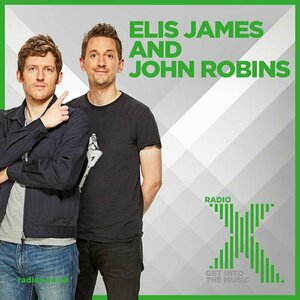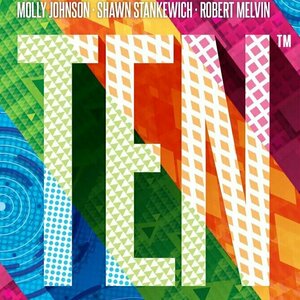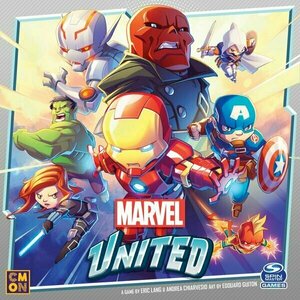
Cruiser Limo Taxi
Games and Entertainment
App
As Modern Taxi Driver & Cruise Celebrities Around City In Your Luxury Taxi Limo Driving If you like...
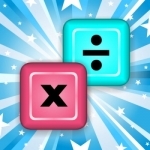
Math - Multiplication table
Education and Games
App
An easy way for kids to learn multiplication table. With "Math - Multiplication table" your child...
Ross (3284 KP) rated The Elis James And John Robins On Radio X Podcast in Podcasts
Jan 4, 2018
Both comedians in their own right, Elis James is a football-mad Welsh mod and John Robins is a Queen-obsessed stickler for the rules. Both have enough in common and enough different opinions to make the show hilarious and something of a cult. Listen to all shows from the start to become a "retro-oner" and a "Podcast Devotee" (PCD).
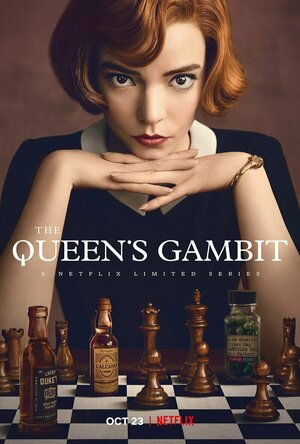
The Queen's Gambit
TV Show Watch
Drama, based on a novel by Walter Tevis. Eight year-old orphan Beth Harmon is quiet, sullen, and by...
David McK (3632 KP) rated In the Line of Fire (1993) in Movies
Jan 16, 2022
This takes a while to get going, and there are more than a few cliches along the way - "I'm going to quit tomorrow' being the most egregious - with the film largely relying on the charisma of its leading actors. Thankfully, they are - mostly - up to the task.
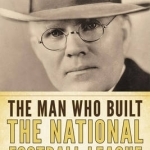
The Man Who Built the National Football League: Joe F. Carr
Chris Willis and James A. Carr
Book
Founded in 1920, the National Football League chose famed athlete Jim Thorpe as its first president,...

Pocket Plants
Games and Stickers
App
Bring life back to barren landscapes by growing and evolving adorable plants! Combine your plants...
Purple Phoenix Games (2266 KP) rated TEN in Tabletop Games
Nov 28, 2021
Disclaimer: We were provided with a copy of TEN for the purposes of this review. This is a final production copy, so what you see pictured is what you would receive in a retail copy of the game. -L
TEN is a push-your-luck game of set collection and auction/bidding in which players are trying to amass the most points by the end of the game. Points are earned by collecting sets of numeric sequences in the 4 colors of the game: Blue, Green, Pink, and Orange. Played over a series of turns, players will be drawing/collecting cards from the tableau, buying cards from the Market, or Busting if they push their luck a bit too far. To setup for a game, assemble the deck of cards as dictated by the player count and set it in the play area. Each player gets 5 Currency tokens with which to start the game, and are all dealt a random reference card. The player who was dealt the reference card with the Starting Player symbol will begin the game. Before getting into the actual gameplay, I want to mention the different card types, as to provide a better understanding when reading this review. In each of the 4 colors, there are card values numbered 1-9, with more copies of the lower numbers and fewer of the higher numbers. There are also Wildcards that can be used to represent any #/color, depending on the card. Some cards in the deck are Currency cards and show a value of 1-5 Currency. Should you choose to take these from the tableau, you collect that amount of Currency to be used for auctions or buying cards in later turns.
On your turn, you will perform a series of actions, the first of which is Draw a Card. You will draw a card from the top of the deck and place it in the tableau. If the card is a # card or a Currency card, you will then decide if you wish to continue drawing cards. If you do, draw the next card, and so on, until either you decide to stop or you Bust (more on this in a bit). As long as you do not Bust, you can decide when to stop drawing cards to the tableau. You may then take one of the following rewards: take all the # cards to your play area, or take Currency tokens (equal to the amount shown on the Currency cards in the tableau). When you take the # cards, they go into your play area and all other players will collect Currency tokens. You then have the opportunity to Buy a card from the Market (by paying the numeric value of the card) and add it to your play area. If you instead choose to collect Currency, you will take Currency equal to the total value of Currency in the tableau, and all other players receive nothing from your turn. All # cards are moved to the Market, and your turn ends. In the picture below, if I choose to take the # cards, I would take the Orange 2 and Blue 6 to my play area, and all other players would collect 7 Currency. Conversely, I could choose to take 7 Currency, and the # cards are added to the Market (on the right-hand side of the picture).
So how does Busting work? The tableau may never have a value of more than 10. Every # card you draw adds to your total value, and any Currency card drawn subtracts from the total. If you were to draw a # card that would give you a total value of more than 10, you Bust! OR if you ever have Currency cards that total more than 10, you Bust as well. So there’s a bit of math involved, with addition and subtraction, but you have to make sure you never get more than 10! For example, in the picture below, the net total value of the tableau is 1. (8 from # cards, -7 from Currency cards) If I were to draw a Currency card of 4-5, I would Bust, because that totals more than 10. In this pictured instance, any # card I draw would not make me Bust, as the highest total would only be a 10, given the current cards in play. If you ever push your luck too far and end up Busting, all # cards in the tableau are moved to the Market, and you gain a Bust token (worth 3 Currency). If you Busted with # cards, then all other players will collect Currency tokens, but if you Bust with Currency cards, nobody receives anything. After resolving a Bust, your turn ends and the game continues to the next player.
If, on your turn, you ever draw a Wildcard, your turn pauses and the Wildcard is auctioned. Each player will have one chance to either bid (increasing the bid from the previous) or pass. Whomever wins the auction must pay their bid, and they collect the Wildcard to their play area. Once the auction has been resolved, your turn continues as normal. It is possible to have multiple auctions on your turn – it all depends on the cards. The game continues in this fashion, players taking turns drawing cards, collecting cards/Currency, buying from the Market, bidding in auctions, etc., until the draw deck has been depleted. The active player finishes their turn as normal, but may not draw any more cards. Points are then tallied. All players will arrange their cards to create consecutive sequences of numbers in the 4 different colors. You receive 1 point per card in your longest sequence of each color. If you have a complete set of numbers 1-9 in a color, you get a bonus point. Players count up all their points, and the player with the highest value is the winner!
That kind of seems like a lot, but I promise it’s actually pretty intuitive when you get playing. Also, huge shoutout to AEG for providing such a well-done reference card – it includes a little flowchart to help you with how the turns flow. The gameplay itself is essentially pretty straightforward. You draw a card, and then react based on what it is. Bust? Collect a Bust token and your turn ends. No Bust? Decide if you want to keep drawing. Done pushing your luck? Collect either the # cards or Currency. Try to make sequential runs of numbers in the different colors – the more cards you get in sequence, the more points you’ll get at the end of the game. The thing that elevates TEN beyond a simple push-your-luck game to me is that it requires more strategy than just luck. You can see what cards are available in the Market – is there something you need to buy? You can see everyone else’s playing area – do they need any of the numbers you just revealed? You know how much Currency every player has – do you bid high on this Wildcard because your neighbor can’t outbid you? There is so much more than just luck in this game, and that is what takes it to the next level for me. I know that Travis has reviewed No, Thanks! in the past, and I would say that this gives me similar vibes, but way better in my opinion.
When it comes to playing games, I am generally not a huge risk-taker. I like making logical choices based on known information and end-game strategy. But something about this game just gets me. I think one element that makes me love this game is the different types of cards – # cards and Currency cards. When you’re pushing your luck and drawing cards, there’s an added element of excitement, because the two different types of cards affect the net total differently. It doesn’t all positively add to the net total, which makes me more likely to keep drawing in hopes that things will cancel out and I can maximize the turn. If everything all added together, and you just couldn’t get more than 10, I would probably only ever draw 2 cards per turn, max., just to make sure I didn’t Bust. But the fact that Currency cards subtract from the net total encourages players to keep pushing their luck, and either earning a big payoff or a big Bust. This game is exciting, engaging, and entertaining to play, and that makes it fun!
To touch on components, AEG always hits it out of the park – and TEN is no exception. The game is mostly just a bunch of cards, and some white/black Currency tokens. The tokens themselves are nice plastic, and are smooth and chunky in hand. The cards are thick and sturdy, and hold up to shuffling pretty well. The colors of the game are bright and vibrant, and they are very clear to differentiate between. It’s a nice pop of color on the table, and that adds to the overall enjoyment of the game. Each of the 4 colors, and the Wildcards for that matter, have a unique background design – which can help our colorblind friends who may not necessarily be able to differentiate between the colors. Just an added plus to help the gamers tell what cards belong to what colors! The game box is equally as colorful, and is eye-catching on the shelf. All in all, I’d say AEG gets a 10 for their production quality here. (Get it?)
I spoke earlier about judging a game by its mechanics, and how TEN really challenged me on that. I was expecting a game that I would like, but would be kind of just ok overall for me. What I got is a game that is highly strategic, yet also unpredictable at times. I am definitely a planner when it comes to strategy, but the unpredictability of this game is light, fun, and engaging for all players at all times. It just is fun to play. This is a game that I see staying in my collection for a long time, and hopefully getting to the table quite often when I need a quick filler that isn’t so light that it’s mindless, but not heavy enough that it’s a brain-burner. If you’re in the market for a fun little game that challenges all players, I would definitely recommend checking out TEN. Purple Phoenix Games rates our games on a scale of 1-6 (not 10 unfortunately in this case), and we give this one a solid 5 / 6.
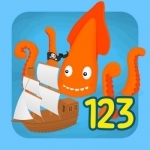
Learn to count 123 pirates
Education and Games
App
Pirate Dot to Dot – Connect the Dots for Preschoolers is a great counting game to help your...
Purple Phoenix Games (2266 KP) rated Marvel United in Tabletop Games
Sep 1, 2021
Disclaimer: This review encompasses only the base game of Marvel United. There are a number of expansions, but they will not be addressed in this review. -L
Marvel United is a cooperative game in which players take on the roles of various Marvel superheroes tasked with stopping the main Villain from completing their Villainous Plot. Follow the setup instructions detailed in the rulebook, selecting a Villain with whom to battle, 6 random Locations, and whichever Heroes you decide to use to fight the big bad. Place Threat cards, Civilians, and Thugs on the various Locations as indicated, and place the Villain and Heroes as described in the rules. Shuffle the Master Plan deck and respective Hero decks, and each player draws a hand of 3 cards. Choose a Hero as the ‘starting’ Hero, and the game is now ready to begin!
Over a series of turns, players will be resolving Villain effects and playing Hero cards to perform actions. The game always begins with a Villain turn, and the first step is to reveal a Master Plan card, adding it to the Storyline (table). Master Plan cards have different effects to be resolved – move the Villain to a new Location, BAM! effects (usually attacking Heroes or advancing their Villainous Plot towards victory), and adding Civilians/Thugs to surrounding Locations. Once all effects on the Master Plan card are dealt with, the game moves to a Hero turn. During a Hero turn, the player will perform 4 steps: Draw a card, Play a Card, Resolve Actions, and Location Effects. To start, the player will draw a card from their Hero deck and add it to their hand. They then select a card from their hand to play, adding it to the end of the Storyline.
Looking at the symbols at the bottom of their played card, the Hero will now resolve their actions. Actions could be Movement (to an adjacent Location), Attack (Thugs/Henchmen or the Villain in their current Location), Heroic Actions (rescuing Civilians or working to clear the Threat on their current Location), or Wild (any of the previous actions). During this step, a cool twist comes into play – after all, the game is called Marvel United, right? When a Hero plays a card, they resolve the symbols on the bottom of their card AND the symbols on the bottom of the previously played Hero card! This simulates the various Heroes uniting their efforts to take down the Villain! So when selecting your card, be sure to check out the last card to see if you can create a sweet chain of actions for maximum benefit. The final step is to use Location effects, if applicable. Location effects are only available after the Threat to the Location has been cleared, and allows the player to perform special actions (draw extra cards, move to other Locations, etc.). If you end your turn on a Location that has been cleared, you may use its ability if you so choose.
In order to defeat the Villain, the Heroes must complete Missions. The 3 Missions in each game are to Rescue Civilians, Defeat Thugs, and Clear Threats. So with their actions on their turns, Heroes will be working to complete these Missions, moving them closer to victory. The turn sequence of the game is unique as well – the Villain will take a turn after every 3rd Hero turn, not opposite every single Hero. Keep that in mind as you decide which card to play when! The game essentially continues in this fashion (with a few extra effects) until either the Heroes win or they lose. Heroes win if they defeat the Villain! The Villain is defeated when at least 2 Missions are completed, and the Villain has been sufficiently damaged by Attacks. Heroes lose if the Villain completes their Villainous Plot, the deck of Master Plan cards has run out, or if any Hero starts their turn with no cards left to play. The Heroes either win together or lose together.
So I know that kind of sounds like a lot, but I promise that once you get playing, the game flows really well and is pretty intuitive. Marvel United can basically be broken down into 2 steps: Villain turn and Hero turn. All you are doing is playing cards and resolving actions to complete your goals. One of the coolest things about this gameplay is the fact that on your turn you resolve not only your played card, but also the previously played Hero card as well. It does a good job emulating the Heroes working together, and adds a strategic element to the overall gameplay. Maybe you wanted to play a certain card, but based on the last Hero card, you should play this one to benefit the group the most. Players really are all working together to defeat the Villain, instead of each playing their own Hero and going in for the fight one-on-one.
Another neat aspect of the game is the inclusion of the Missions. Heroes are not allowed to directly attack the Villain until at least 2 Missions have been completed. This ups the gameplay because it stops players from just going straight for the Villain from the start, not taking anything else into account. In ‘real life,’ Heroes are also concerned with saving Civilians and neutralizing threats, so the Mission requirement makes the gameplay feel more authentic. Well, as authentic as a superhero game can feel…. The variability of Locations and the random setup of Threats each game means that you likely won’t play the same game twice. Add in expansions too and you’ve got even more scenarios. With different Hero choices, you get to try out different combinations and find out which Heroes really work well together. The gameplay itself may be simple (draw cards, play cards, resolve cards) but the variety of Heroes, Villains, Locations, Threats, etc. keeps it engaging and entertaining.
As for components, I only have positive things to say. The Villain/Hero minis are chunky and cute, the artwork is all colorful and fun to look at, and the cardboard tokens are thick and crisp. All the symbolism in the game is clear, and the text is legible and easy to comprehend. One thing to consider is that this game can be a bit of a table hog if you let it. So just be prepared for a bit of a bigger footprint with this one. Overall, great production quality of the base game, and from what I’ve seen of the expansions, those are top notch as well.
Don’t let the cutesy artwork fool you – Marvel United isn’t an easy game by any means. It takes a decent amount of strategy to be successful, and it does really take a team effort. You stay engaged in the gameplay right up until the very end, and it’s more involved than you would think for being a lighter game. I am also a big fan of Marvel Legendary, and I have to say that this gives me those vibes, but in a more simplified and streamlined way. I’m not sure I would go as far as to call Marvel United “Marvel Legendary Jr.,” but it’s also not entirely a bad idea….. Overall though, I really liked Marvel United way more than I first anticipated. It’s light, yet strategic, and has some unique elements that keep you on your toes. I can’t wait to get my hands on some of the expansions to see how I can mix and match and create even more awesome scenarios! Purple Phoenix Games gives this one a heroic 16 / 18.
